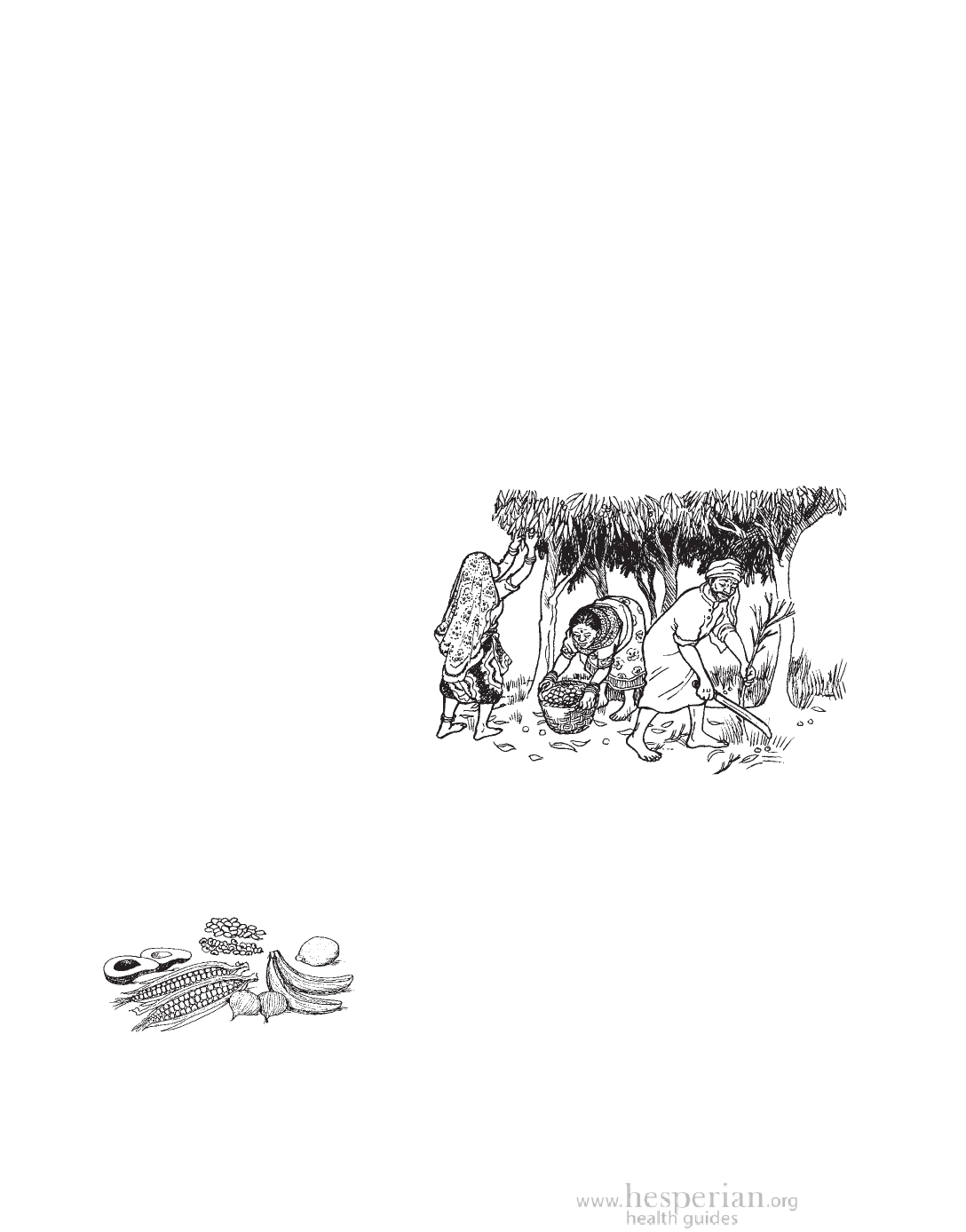
28 Protec ting Natural Resources for All
Damage to the web of life leads to new illnesses
Loss of biodiversity means there are fewer kinds of plants and animals, and
the natural balance among plants, animals, and people is disturbed.
This can cause new illnesses. Here are 2 examples of how a loss of biodiversity
from deforestation caused new illnesses:
• Where people cut down tropical forests for farms and towns in Africa,
there have been outbreaks of leishmaniasis, yellow fever, and sleeping
sickness. These are diseases spread by insects that thrived when water
pooled instead of being absorbed by the soil, and the animals that eat the
insects lost their forest homes.
• When large numbers of trees were cut down in North America, the
number of white-footed mice grew because their food supply increased
and the number of animals that hunted them got smaller. These mice
carried an illness called Lyme disease, which then spread to people.
Plant medicines depend on biodiversity
Most medicines are made from plants.
When forests are cut down, and
rivers and wetlands dry up, we
lose many of these plants. We also
lose traditional knowledge of how
to use these plants for healing.
Protecting biodiversity and the
web of life protects our cultures
and our healing traditions.
A healthy diet depends
on biodiversity
Good health depends on eating
a variety of foods, such as fruits,
People who use medicinal plants often
cultivate and care for them, protecting
vegetables, grains, and wild foods such
both biodiversity and traditions.
as berries, fish, and game. When we
lose biodiversity, we lose many of the foods we rely on for a healthy diet. Then
entire communities are faced with the health
problems that come from poor nutrition.
Planting a variety of crops
promotes both biodiversity
and a healthy diet.
Gloria, the health worker with Salud para
el Pueblo, understood the web of life. Because
honey bees need flowers to make honey, and
flowering trees need bees to help them bear
fruit, planting trees and raising bees helped
the community produce food and restore the
web of life at the same time.
A Community Guide to Environmental Health 2012